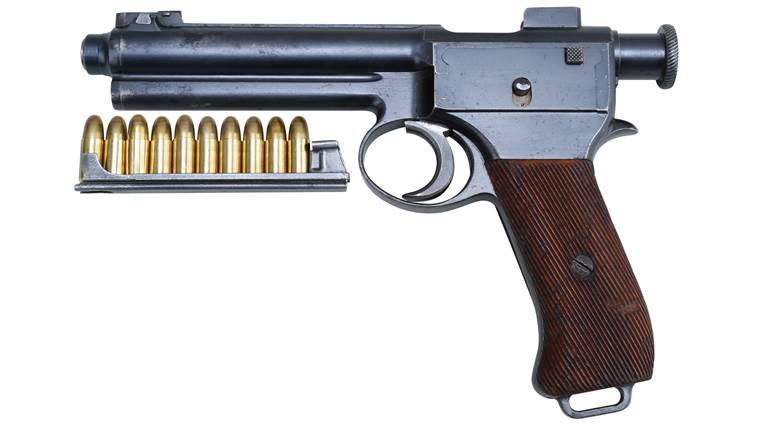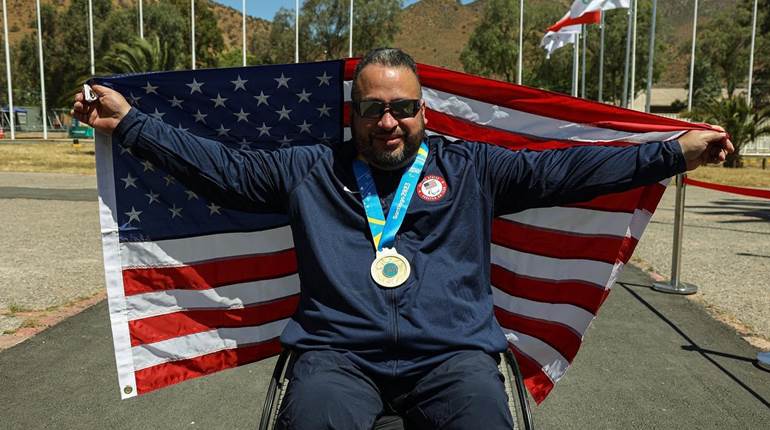
7/24/2012
Steyr has been in the semi-automatic handgun game since 1894. The Austrian company introduced a striker-fired, polymer-frame service pistol in 1999 called the M series, soon followed by S-series pistols with shortened slides and frames for concealed carry. Offered in 9 mm, .357 SIG and .40 S&W, the pistols gained a cult following in the United States because of their accuracy and exceptional ergonomics. In 2004, Steyr released updated versions with a Picatinny rail molded into the dustcover and an improved grip with stippled panels for added control. The A1 models disappeared from dealer shelves for a time while Steyr reorganized its distribution and dealer network.
In 2010 the M and S series pistols were back, and in 2011 the C9-A1 was introduced to bridge the gap between the full-size M and sub-compact S series. The C9-A1 has a full-size grip with a 15-round magazine but a shortened barrel (3.6 inches) and frame. Most shooters would classify it as a compact, similar to the M1911 Commander or Smith & Wesson M&P Compact with XGRIP magazine adapter.
Like most striker-fired pistols, the C9-A1 has no external hammer and cycling of the slide preloads the firing mechanism. Pulling the trigger finishes compressing the firing-pin spring and then releases the striker, completing the firing cycle. Like many semi-automatic pistols developed after the Hi Power, the Steyr utilizes the Browning short-recoil operating system with a linkless barrel. While the operating system is fairly traditional, there are some features unique to the C9-A1.
Most pistols of this type have but one external safety, a small blade that protrudes through the trigger’s face. Those safety blades usually pivot on a pin, or in some cases the trigger is articulated and disengages a block when pulled. The C9-A1 has an inset button that moves straight back into the trigger body and eliminates the pinch sometimes felt with other designs. The safety’s straight rearward movement and exceptional fit in the trigger body make it barely perceptible during the trigger pull.
The sample pistol had a 5-pound, 1-ounce average trigger pull that was smooth and crisp. Steyr worked to improve the trigger system before the C9-A1 was introduced, and the result was the Reset Action System. A pin just under the rear sight holds a roller that maintains contact with the striker as it is drawn rearward during the trigger pull, reducing movement and improving consistency. Through 20 trigger pulls measured with a Lyman trigger-pull gauge, the Steyr had an extreme spread of just 3.1 ounces.
The remaining fire controls are standard and include a slide-lock lever and magazine release. Both might be described as minimal, but dropping empty magazines and releasing the slide during shooting drills were non-issues. Looking at the slide profile from the rear, the slide-lock lever is angled outward away from the frame much more aggressively than with many other pistols so the thumb easily catches it when swept down the frame. The magazine release is in a position easily accessed by the shooting hand but is not so big that it is inadvertently depressed under stress.
The take-down lever is on the frame’s right side and works in conjunction with a small, keyed safety lock. Pushing the tumbler into the frame with a supplied key and rotating it 90 degrees counter clockwise blocks the trigger mechanism altogether. To field-strip the pistol, first make sure it is unloaded and then dry fire it. Push in the tumbler flush with the frame, rotate the lever down and separate the slide from the frame. A captured recoil spring and guide rod can be compressed slightly and pulled out of the slide recess and locking-block lug. The barrel then drops out of the slide for cleaning.
The C9-A1 has a cold hammer-forged barrel. Steyr has absolutely mastered the process and produces exceptional barrels. The C9-A1 proved extremely accurate with an average extreme spread of 2.17 inches. During testing, three self-defense and duty loads were used and numerous groups of slightly more than an inch were printed at 25 yards.
The C9-A1’s frame is deeper and its slide shallower than most striker-fired pistols, giving the pistol a low center of gravity. Such a low bore axis makes perceived recoil less pronounced and shot-to-shot splits much faster. With a 111-degree grip angle, the Steyr is similar to most other European designs.
There were no failures through several hundred rounds. A generously proportioned extractor and fixed ejector get cases out of the chamber and well away from the shooter. It is important to note that the slide must be left to move along at its own pace when chambering a round. Riding the slide will cause it to hang up just a fraction of an inch before coming fully into battery. The pistol will fire but it takes double the trigger pull to seat the slide and release the sear. This could be an issue for those who press check their pistols frequently.
The Steyr is not equipped with a replaceable backstrap system. The grip, even with a central finger groove, is very narrow and close in size to most grips with a small backstrap in place. Twin grip panels wear light stippling and both the front and backstrap are gently serrated. The combination is not likely to snag or abrade clothing, but could stand to be a touch more aggressive for strenuous, sweaty situations.
The sample C9-A1 was not fitted with the iconic Steyr trapezoidal sights, rather it has a standard dot pattern with two white rear dots and a red dot up front. Both front and rear sights are drift-adjustable and low-profile. The red dot was extremely difficult to pick up in low light, though night sights should be installed if the pistol is to be used in a self-defense or duty role anyway.
The Steyr C9-A1 proved to be exceptionally accurate and reliable, typical of Steyr firearms. Concealed-carry practitioners looking for a compact carry gun with exceptional magazine capacity will find the C9-A1 up to the task.
Manufacturer: Steyr Arms, Inc; (205) 655-8299; www.steyrarms.com
Caliber: 9 mm Luger
Operation: recoil-operated, semi-automatic center-fire pistol
Frame: reinforced polymer
Barrel: 3.6" cold-hammer-forged
Rifling: six-groove, 1:9.8" RH twist
Magazine Capacity: 15 (two supplied); 17-round magazines available
Sights: low-profile, drift-adjustable three-dot configuration
Trigger Pull: double action only; 5-lb., 1-oz. pull
Overall length: 6.7"
Width: 1.2"
Height: 5.1"
Weight: 25.5 ozs.
Accessories: owner’s manual, lockable box, extra magazine
Suggested Retail Price: $550





































